EXT Era V2.1 Fork
Travel Options: 140, 150, 160, and 170 mm
Wheel Sizes: 29’’
Available Offset: 44 mm
Stanchions: 36 mm
Blister’s Measured Weight (170 mm, uncut steerer tube): 2,369 g
MSRP: €1,480 / $1,650
Reviewer: 6′, 170 lb / 183 cm, 77.1 kg
Bolted To: Nicolai G1 & Contra MC
Test Duration: 8 months
Test Locations: Washington & British Columbia
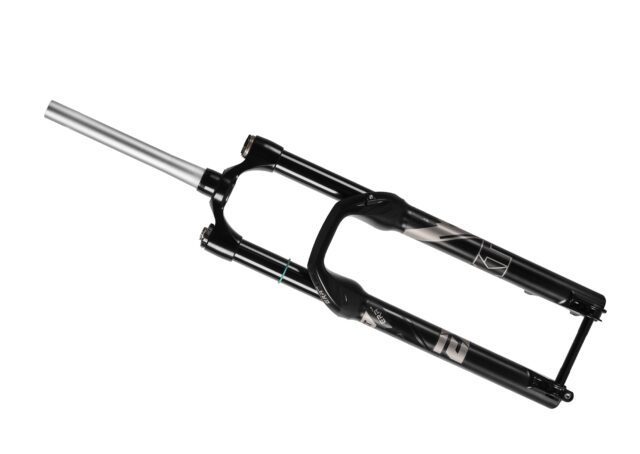
Intro
We liked the original EXT Era quite a bit when we reviewed it a few years ago, but EXT has been tweaking and refining the fork ever since, and just launched a new iteration that they’re calling V2.1. While the new fork shares most of its features and overall design with the versions that preceded it, there have been a lot of internal tweaks over the years that have added up to some big changes in on-trail performance.
The Design
The high-level design and features of the Era V2.1 are mostly the same as the original version that we reviewed a few years back — it’s still offered only for 29’’ wheels and with 44 mm of offset; the travel is still adjustable internally, between 140 and 170 mm, in 10 mm increments, via spacers; the damper design carries over, with the same adjustable high- and low-speed compression, plus rebound; and the HS3 spring with its dual-positive chamber design, plus a small coil spring for initial small-bump sensitivity remains as well. For a complete rundown on all that, check out the “Design” section of our review of the original Era. So what has changed? Before we get to V2.1, it would probably help to start with what changed from V1 to V2:
The biggest change in the Era V2 was the introduction of new lowers with a floating axle design, in place of the non-floating design in the original. The new axle layout is very similar to that used by Fox in their 36 and 38, Öhlins across their single crown fork range, and others, with an axle that threads into the non-drive-side dropout and is clamped with a pinch bolt at the drive-side one. A step on the axle butts up against the hub end cap to secure the wheel without pinching or spreading the fork legs for improved alignment and reduced friction. The axle is still a 110 x 15 mm Boost size, with dropouts machined for Torque Cap hubs, though you can still use standard Boost ones as well.
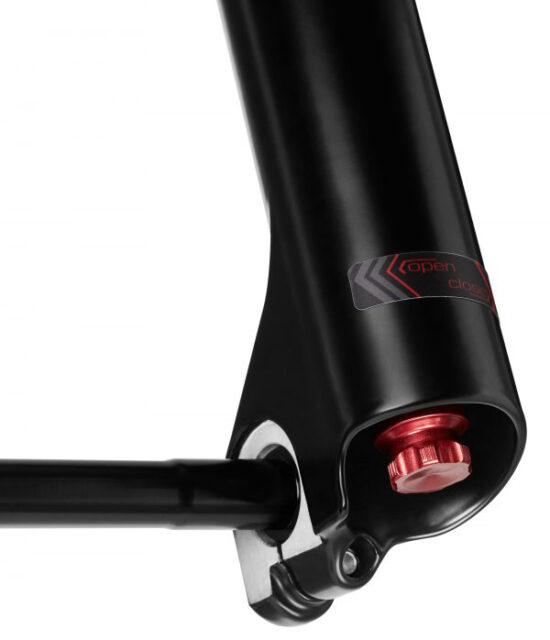
The Era V2 also received updated bushings with added dimples to help trap oil on the sliding surfaces, and a “backup channel” on the lower bushings — essentially a groove that gives the bath oil an improved pathway to the upper bushing and seals to keep those lubricated as well. The air spring also received some tweaks, with the “++” chamber (the secondary positive ramp-up one; again, check out our review of the Era V1 for a more complete rundown) getting a new topout bumper to reduce noise and a clunking sensation that some riders had complained about, and improved bottom-out bumpers as well.
And that brings us to V2.1. The main changes here are in the spring, and while the overall layout hasn’t changed, EXT has made some adjustments to the relative volumes of the various chambers, making the negative and main positive (i.e., “+”) ones bigger, with the size of the ++ one being reduced accordingly to make room.
The idea here is to increase small-bump sensitivity for improved traction and comfort while making the fork a little bit less progressive overall, with a less aggressive ramp-up deeper in the travel. The dual-positive spring design does make the Era’s spring highly tunable, but EXT decided to aim for a slightly less progressive, less aggressive baseline to make setup easier for folks who wanted a little more plushness and comfort than they could get out of the very supportive earlier iterations.
EXT has also introduced new lower bushings on the Era V2.1, with a new sliding surface material that they say is smoother and can be manufactured to tighter tolerances for reduced friction. All of the updates in the V2.1 fork can be retrofitted to earlier generations (both V1 and V2); reach out to your local EXT service center if you’re interested in updating an older fork.
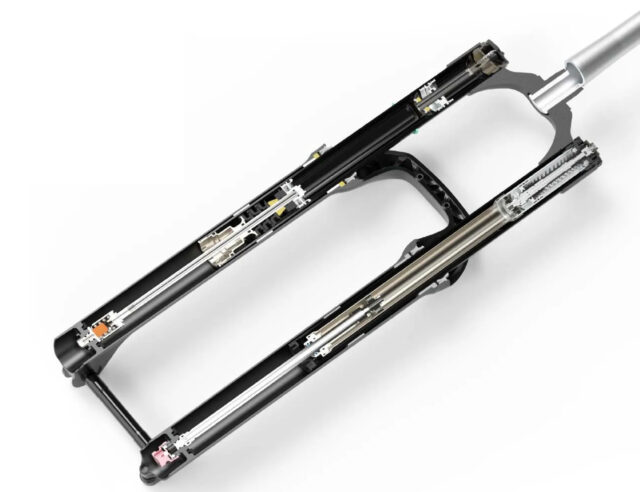
FULL REVIEW
I’ve been very, very impressed with a number of EXT’s rear shocks over the years, having ridden several iterations of the Storia V3, and being similarly impressed by the Aria and the Arma MX as well.
But while the Era V1 was a good fork, it didn’t blow me away as thoroughly as the Storia consistently has. The Era’s initial sensitivity and grip were outstanding, but the spring settings that produced the midstroke feel I wanted made the Era V1 more progressive deep in its travel than I prefer. Its chassis stiffness was adequate, but a notable notch below a lot of the bigger, burlier single-crown forks out there. And while I was able to find damper settings that I liked on the Era V1, its compression tune felt notably firm and was likely to be a bit much for some folks.
The Era V1’s damper performance was great, its chassis was impressively smooth and low friction, and its combination of very good midstroke support and small-bump sensitivity was very impressive. But there were just enough drawbacks for it to all add up to a fork that I merely liked instead of fully loved.
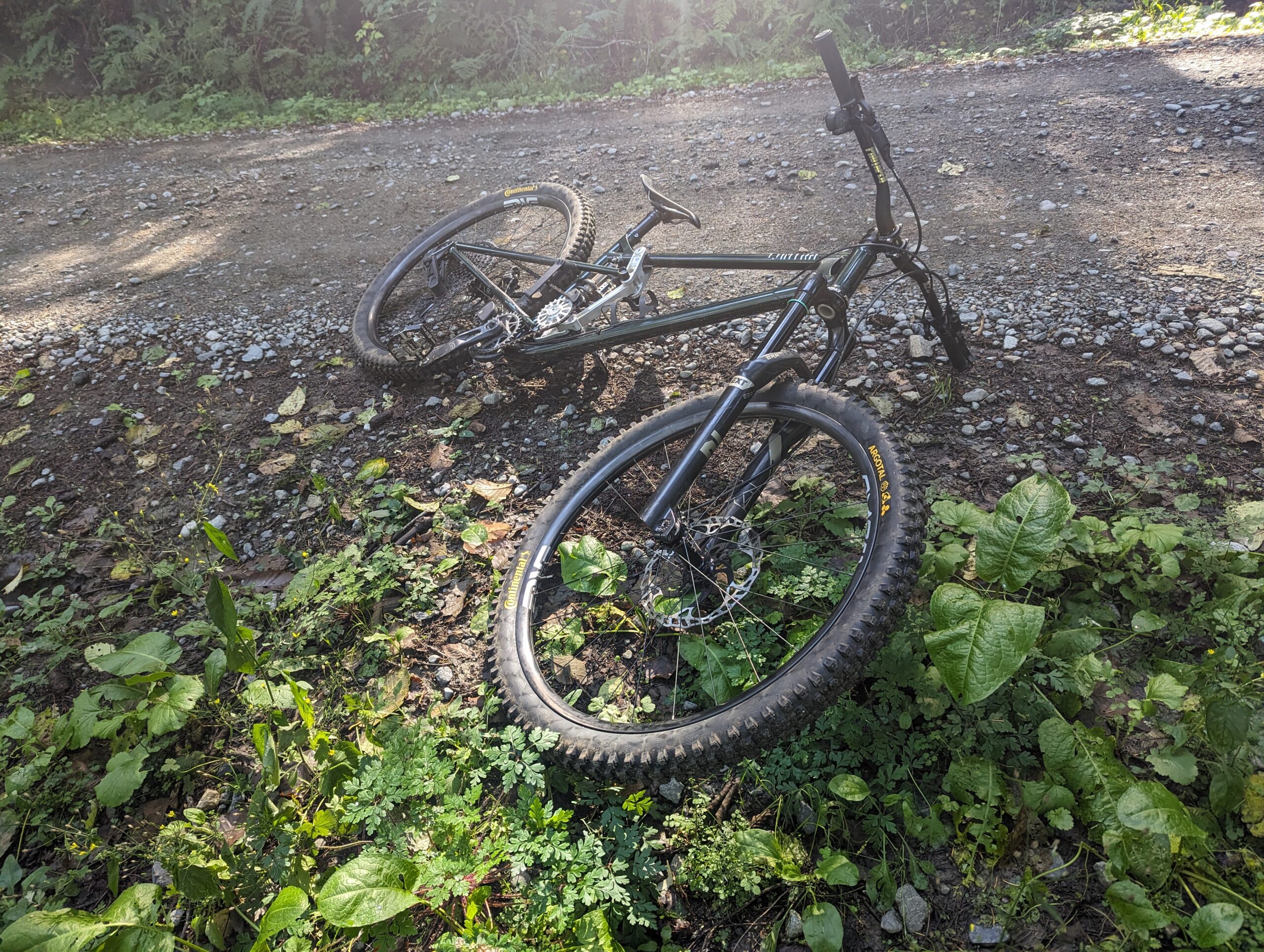
So when I heard the list of updates EXT had made to the Era V2.1, I was excited to try one — their list of changes sounded like just the things that I’d want to tweak if I’d been in charge of product development over there.
[If you want to hear a whole lot more about suspension design from the guy who’s actually in charge of product development at EXT, check out episodes 140, 146, and 173 of Bikes & Big Ideas, where I go very deep on the subject with EXT founder, Franco Fratton.]
I’ve been riding the Era V2.1 since the middle of last summer, and it’s now time to weigh in.
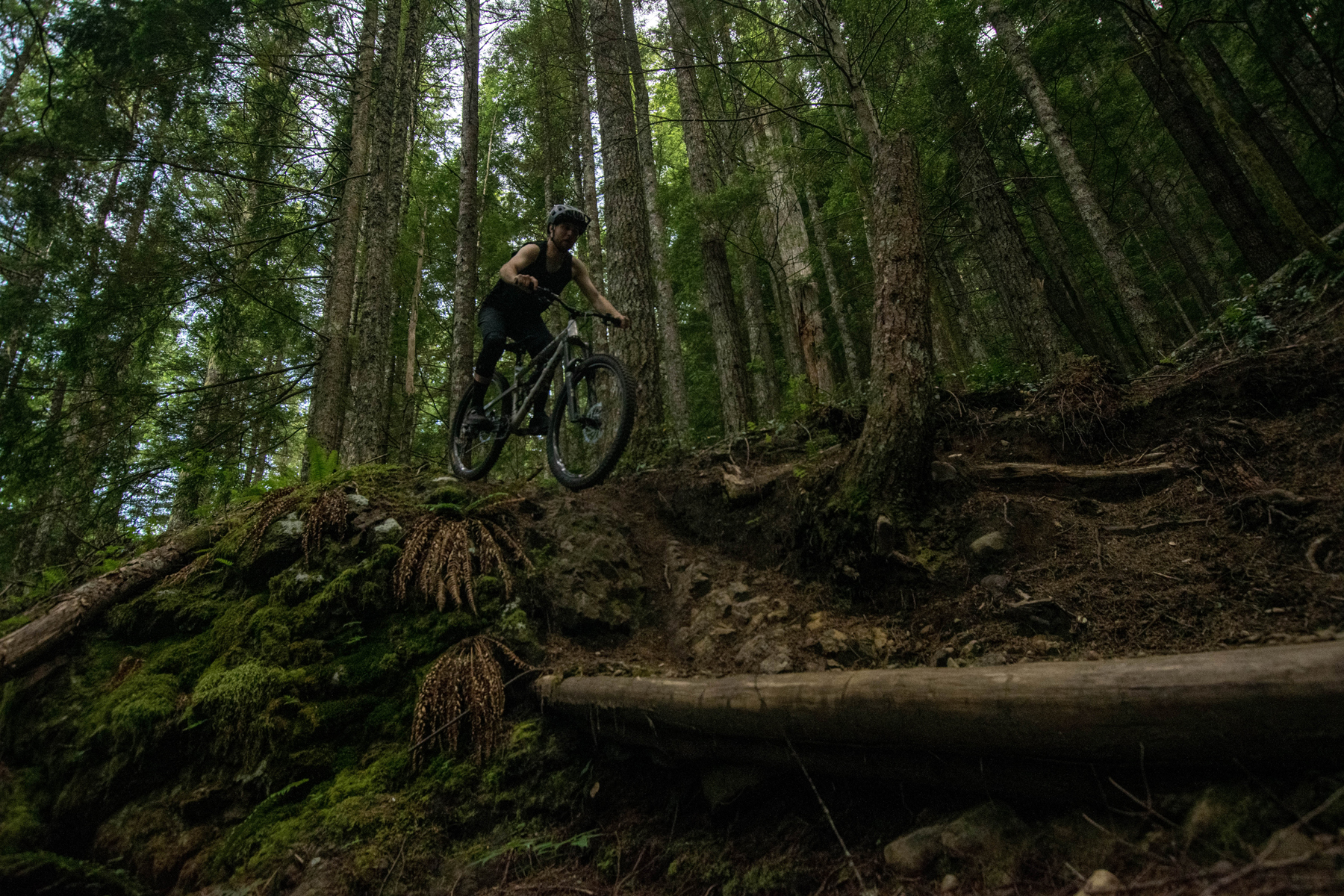
Performance
The short version is that the updates to the Era V2.1 have been quite effective. There are still some similarities in the performance and feel to the original, but the Era V2.1 feels easier to set up and offers a tuning range that I think will be more useable for more folks — especially those who (like me) found the original to be a bit too progressive deep in the travel when otherwise set up to their liking.
I’ve been a big fan of several different forks that feature dual-positive air spring implementations, mostly for how they help improve midstroke support without making the fork too firmly sprung overall. This design is especially helpful on longer-travel, more gravity-oriented bikes that spend a lot of time in very steep and technical terrain, where you’re already typically putting a lot of weight on the front end, and often exacerbating the issue by needing to brake heavily on steep sections to keep speed in check.
The original Era was no exception to this trend and it did a notably good job of combining good midstroke support with impressive initial sensitivity and grip — two traits that are generally in conflict with each other from a setup perspective. But when I set up the Era V1 to provide the support through the middle part of the travel that I wanted — again, especially on really steep, somewhat tight trails that require a bit of brake dragging — I found the V1 fork to be more progressive than I wanted or needed it to be deeper in its travel. This made it hard to use all of its travel, and produced a more abrupt ramp-up than I’d prefer.
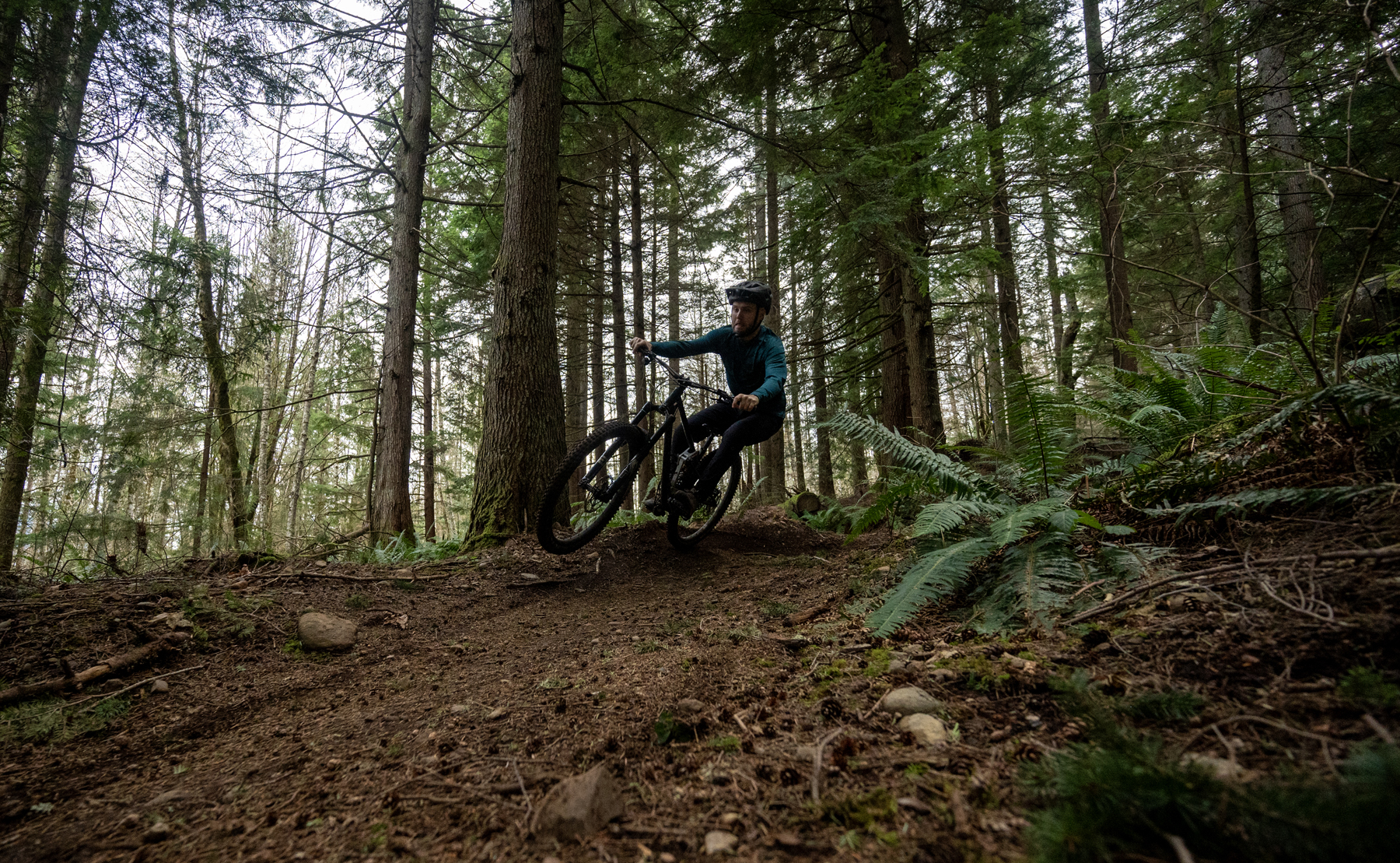
That, to me, is where you find the biggest improvement in the Era V2.1. EXT hasn’t changed the fundamental spring design much, but by tweaking the relative air-chamber volumes, they’ve made it possible to get the support I want without the fork being as progressive later in its travel and easier to tune / less sensitive to small air pressure changes as a result.
The Era V2.1’s dual-positive arrangement still arguably takes a little more effort to dial in than a more conventional fork with a single air valve (and there’s a learning curve to figuring out how to work with them in general), but EXT has streamlined things substantially with the Era V2.1.
I also found EXT’s baseline settings for air pressure to be a good starting point, at least with the Era V2.1 set to 170 mm of travel. I haven’t had the opportunity to ride the V2.1 at a shorter travel setting yet, but needed to go substantially higher than the recommended in the Era V1 at 140 and 150 mm of travel; the same should be true here.
For reference, EXT recommends 65 psi in the Era V2.1’s “+” chamber and 100 psi in the “++” one for 176 lb / 80 kg riders (just a touch over my weight). I found those settings to be right on the money for me on the Nicolai G1 that I used for the initial part of my testing; I went a couple of psi higher in both chambers when I later used the Era V2.1 on the Contra MC, but was still in that ballpark.
The re-tuned spring might give the Era V2.1 even better small-bump sensitivity than the V1 while maintaining its excellent support and making it less progressive deeper in the travel (by default). You can still make the V2.1 notably progressive if you want to; you can do so by running a little more pressure in the ++ chamber. However, the overall tuning window on the Era V2.1 feels more useable and I think a wider range of folks should have a much easier time finding settings they like on the updated version.
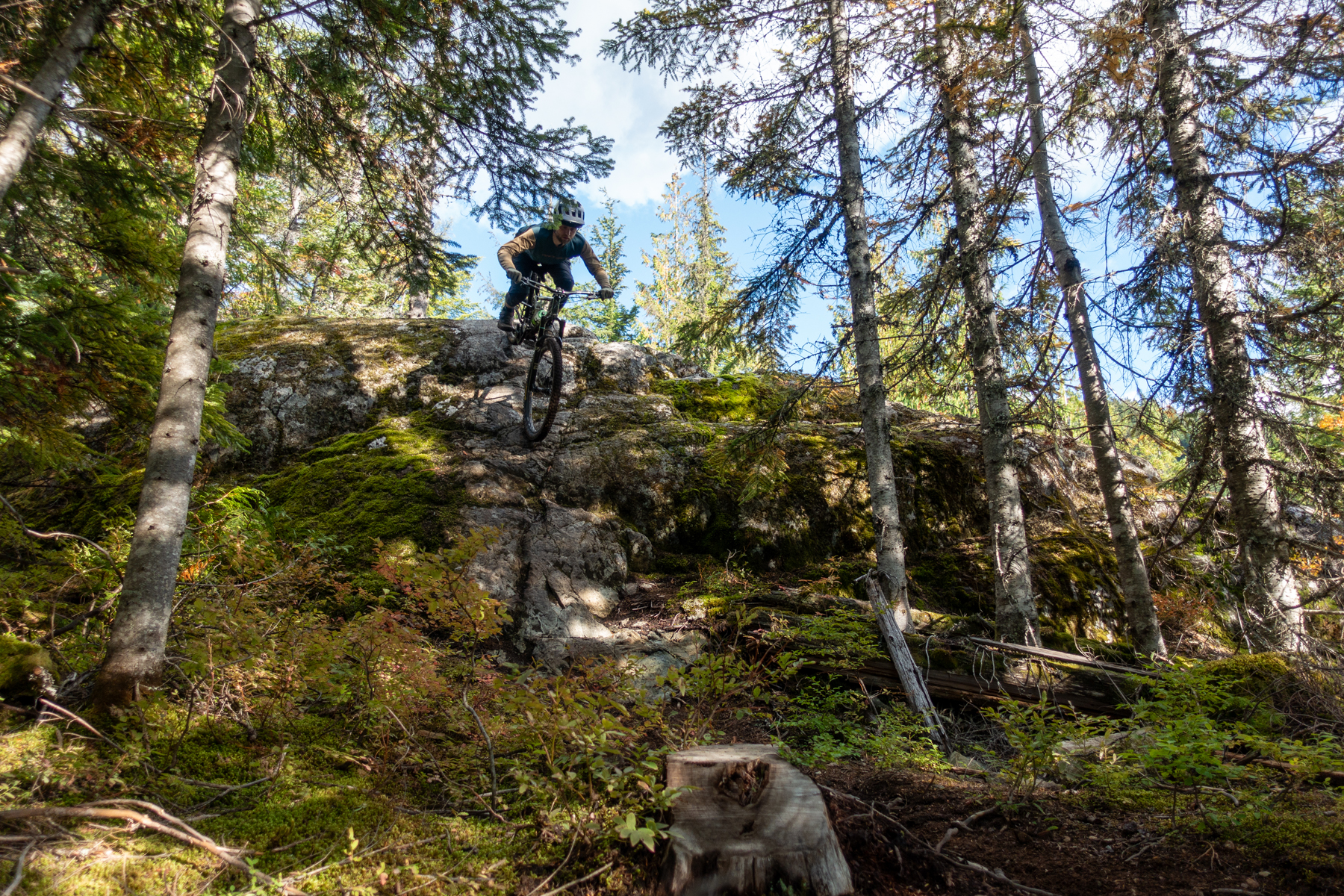
The Era V2.1’s damper doesn’t feel like it’s changed as noticeably as the spring, but it’s been tweaked a bit, too. The overall damper performance doesn’t feel wildly different, but the stock compression tune is a little lighter, shifting the adjustment range to one that, as with the spring side, I think will work for a wider range of riders than the V1.
The Era V2.1 is still a fairly supportive fork with a moderately firm compression damping range; not quite to the same extent as the Öhlins RXF38, but similar to the Manitou Mezzer Pro and more so than the RockShox ZEB and (especially) the Fox 38 Grip2.
One of the Era V1’s strengths was being able to run firm compression damping settings that felt very composed and controlled when pushing the fork hard in steeper, faster terrain — without it feeling spiky or harsh under especially sharp, high-speed impacts. That’s still true of the Era V2.1. Its overall adjustment range has shifted a bit lighter, but it’s still a fork that I think will appeal most to folks who want a fork that feels fairly supportive and composed, rather than being ultra-lightly-damped and cushy.
The Era V2.1’s updated chassis also feels a little bit stiffer and more precise in how it tracks vs. the original Era. The Era V2.1 is still a small notch behind the very stiffest single-crown forks out there, but the gap has narrowed to the point that I didn’t notice it much, unless I was really paying attention when riding the Era and, say, a RockShox ZEB back to back.
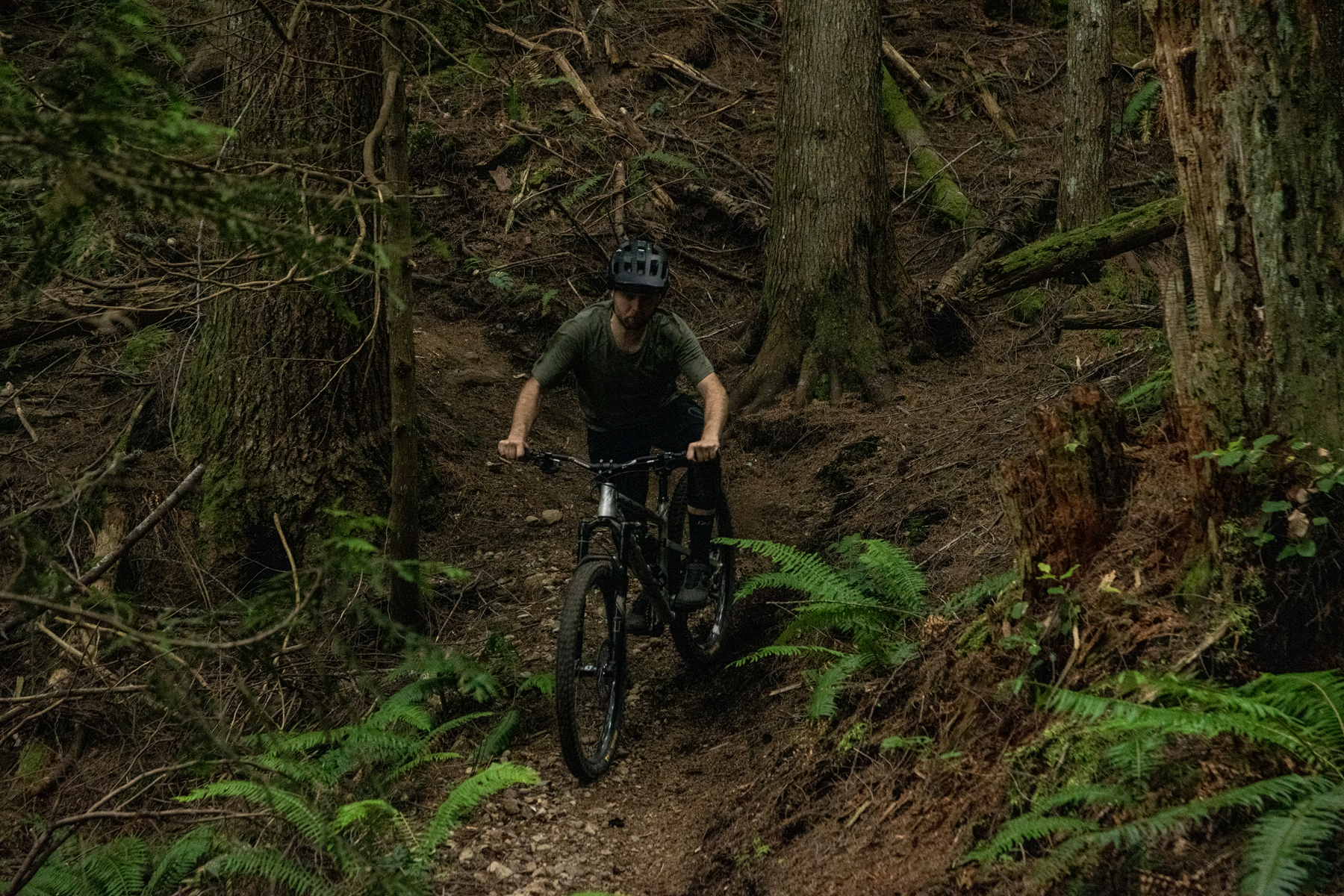
The Era V1 was stiff enough that it felt at home when set to 170 mm of travel and put on the front of a big Enduro bike, but I would have liked a little more precision from it; the V2.1 hasn’t left me wanting more. In terms of stiffness (and weight), the Era V2.1 feels more directly comparable to the ZEB / 38 / RXF38 class of forks than their smaller, lighter-duty counterparts, stanchion size notwithstanding.
EXT also says that the sliding interfaces have been improved and made even lower friction on the Era V2.1 — something that was already a strong suit of the V1. I can’t say that I noticed a huge difference there, but, as with the original, the Era V2.1 feels remarkably smooth and resistant to binding as it goes through its travel, even when heavily loaded fore-aft. I don’t doubt that EXT has found some incremental improvements to make on that front, but at some point, slightly better than already outstanding is just… still really good.
The only issue of note that I ran into during my time with the Era V2.1 was that the original lowers developed a crack at the pinch bolt for the axle, about 5 months into my testing. It’s possible that I accidentally over-torqued it at some point, but I had been fairly careful not to. EXT acknowledged that they’d seen that same issue a few times before, and they sent over a slightly updated set of lowers, which feature a much narrower slit at the axle pinch bolt. That adds some more material where the crack developed in the original ones and means that there’s less room to tighten things too much and put undue stress on the lowers before the two faces bottom on each other. I’ve had no issues with the replacement lowers, and the fix seems robust.
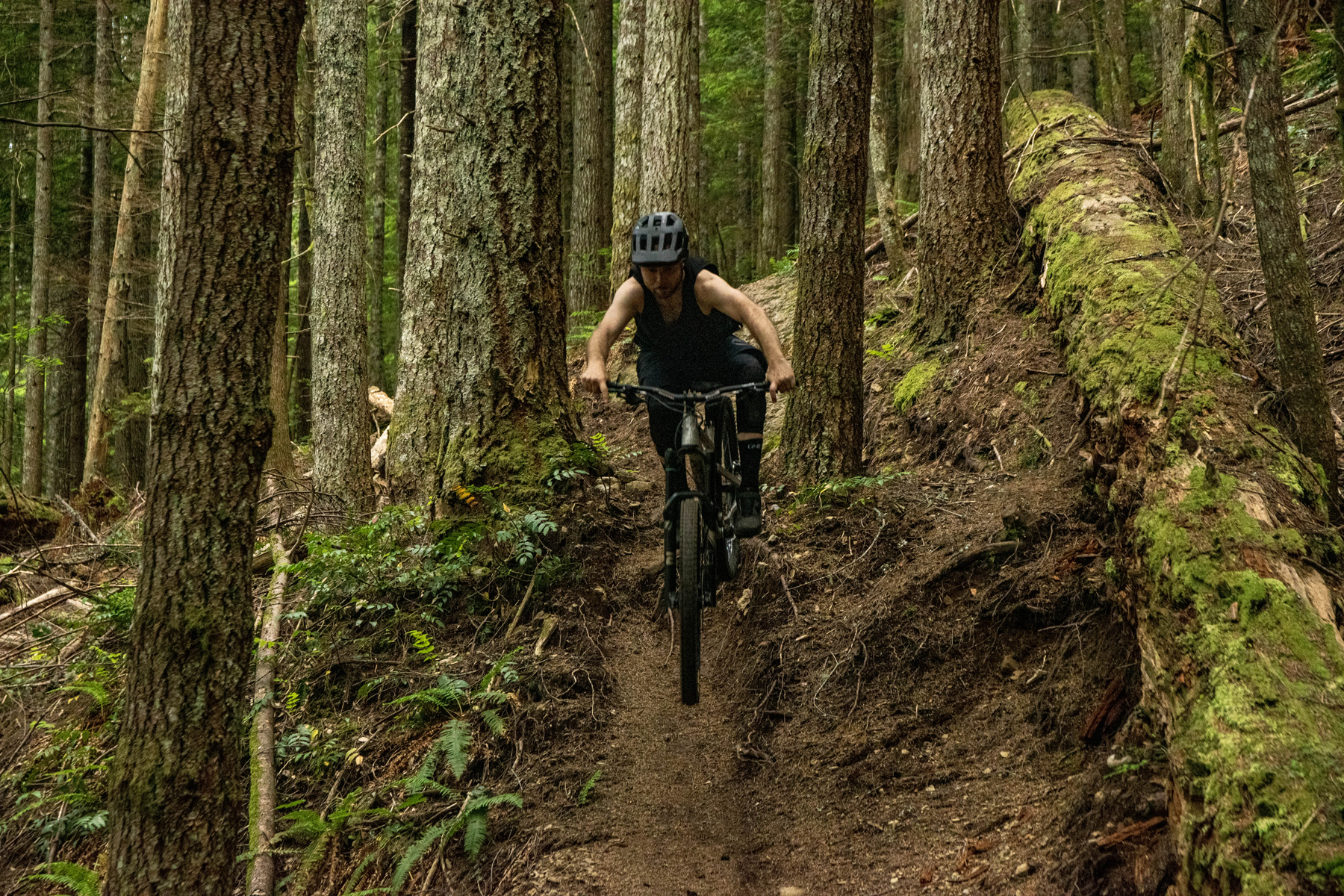
I’d also love to see a bolt-on fender for the Era at some point. The lowers have threaded bosses to accept one, but the fender itself has yet to materialize. It’s a minor detail (and standard, flexible, plastic, zip-tie-mounted ones work just fine), but it’d be a nice touch on what is an otherwise very premium product.
Who’s It For?
The original EXT Era was an impressive fork that did a lot of things well but was best suited to riders who wanted a fairly firm, supportive setup over an especially cushy, compliant one — and were willing to put some effort into tuning to get there.
The Era V2.1 still caters to that same audience but has broadened its boundaries a good bit. The new version is easier to tune, has an overall adjustment range that will work for a broader spectrum of riders, and generally feels like a very well-targeted refinement of the original. It doesn’t come cheap (performance gains at the high end rarely do), but its performance will absolutely justify the price tag for the right folks.

Bottom Line
The EXT Era V1 was an extremely good fork with a few quirks, most notably how progressive it felt deep in the travel when in its longer-travel configurations. The latest Era V2.1 feels much more like a refinement of the same general recipe, rather than EXT going in an entirely different direction. But they’ve done a great job of improving the performance in a few key areas (the aggressive progressivity first and foremost), made it easier to effectively tune, and tweaked the damper in ways that should give it a more useable adjustment range for more folks.
Like the original, the Era V2.1 is still a fork that I think is going to appeal most strongly to riders who want a notably supportive, highly-tunable option and are willing to put some time and effort into dialing it in, but it’s easier to set up than the original, and with an appropriate setup, the performance is pretty special. It’s an outstanding fork and one that’s got a home on the front of my personal Enduro bike for the foreseeable future.

That last photo with the snowy mountains in the background is gorgeous.
I thought I was not charging hard enough when I had my V1 before I sold it and kept opening my compression dials or reducing air pressures, so this is validation for me. I also totally agree about the lack of a proper BOLT ON mud fender. When I did zip tie a fender on, I felt there was not enough clearance between the 2.5 Maxxis (Assegai, Dissector, DHF) tire and fender which was evident when riding through mud and gravel. I would never be able to ride my Conti Argotal or Kryptotal 2.6 with a mud fender on the V1. Nice review, I love my Storia, eStoria and Aria shocks, but a 36 or 38 with a DSD Runt or Smashpot does it all for me but I do love me some EXT…
Take an Intend. All you need and not so overdamped. Sinilar price when buying but cheap spare parts, wear parts and Service prices.
What a great, in-depth review. Hoping for similar on DVO’s new Onyx 38!